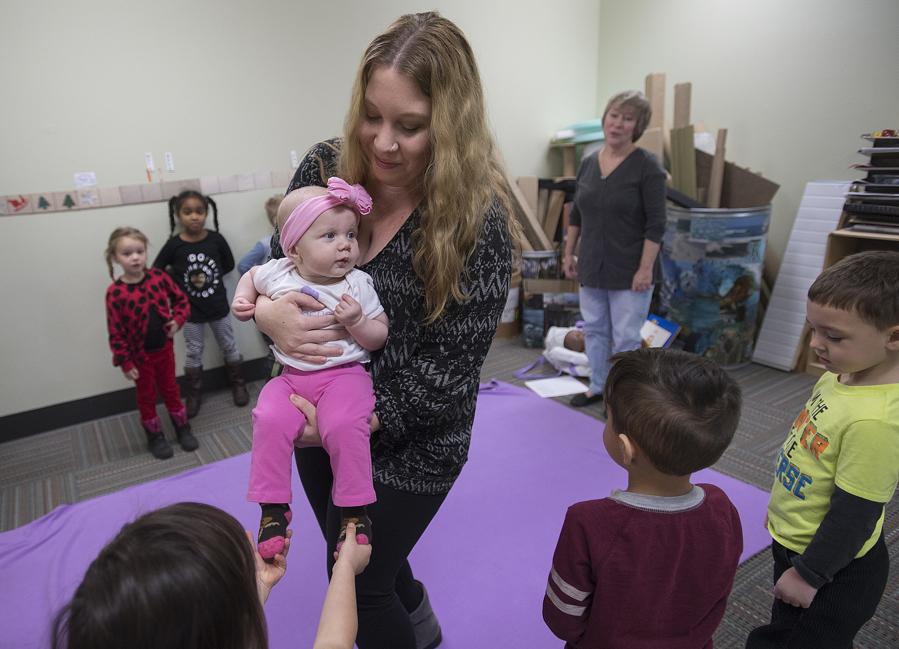Surrounded by curious 5-year-olds, baby Maya peers at her own reflection in a mirror stitched into a soft book.
That’s when YWCA Care Children’s Program student Jericho Ross makes an observation.
“She’s teaching herself!”
That’s the kind of connection preschool teachers at the YWCA hope to see when 6-month-old Maya comes to visit. Maya and her mom, Alyson Boyse, are this year’s guest teachers for the Seeds of Empathy class, an international program offered locally at the YWCA. Parents who volunteer with the class bring their babies in about once a month over the course of the school year, allowing children in the preschool program to watch infants through a year of growth.
The program is designed to help children develop a stronger sense of empathy and understanding of why children behave the way they do.
“The idea is to build what they call emotional intelligence,” said Leah Reitz, the director at the child care program. “They can see how they each feel and react.”
Seeds of Empathy is the partner program to Canadian import Roots of Empathy. That program is similarly structured around monthly visits with a baby, but designed for students in kindergarten through eighth grade.
Every month at the YWCA, children embark on a new unit of the curriculum, reading two books on the month’s theme, then having a related visit with the baby. By the end of this month, which has a crying and problem-solving theme, students should be more sensitive to their classmates’ needs. If someone is crying, for example, students are encouraged to ask how they can help rather than ignoring or making fun of them.
“A crying baby is not a bad baby,” Reitz told the class. “It’s a baby with a problem to be solved.” On this visit, though, Maya doesn’t seem to have any problems. She chews on a toy, staring at the students in the class.
That isn’t always the case, though. Boyse tells the students her daughter has been teething.
“She cries when she’s hurt, when she’s hungry, when she’s sleepy or when people leave her,” Boyse said.
Students also spent their visit singing to Maya and watched as Reitz tickled her feet and moved her leg as if pedaling a bicycle. If Maya resisted or seemed upset, Reitz said, that’s a signal to stop.
“Maybe we’ll get to see her try to crawl,” Reitz said to excited chattering from the students.
Backed by research
Melissa Soltani, who manages the Roots of Empathy program in Washington and the Seeds of Empathy program in the United States, called the skills students develop in the class “emotional literacy.” By spending time reflecting on how the baby’s needs may mirror their own, students learn to be more sensitive to others.
“That’s such an important part of interacting with their peers,” Soltani said.
Research listed on Roots of Empathy’s website conducted by the Government of Manitoba suggests that students who participated were more helpful and less aggressive. A University of Missouri report also found the program reduces aggression among children.
Soltani called the findings and outcomes a mark of success for the program.
“That’s how we measure success, when you see instances of children recognizing someone’s needs and responding to those,” Soltani said.




